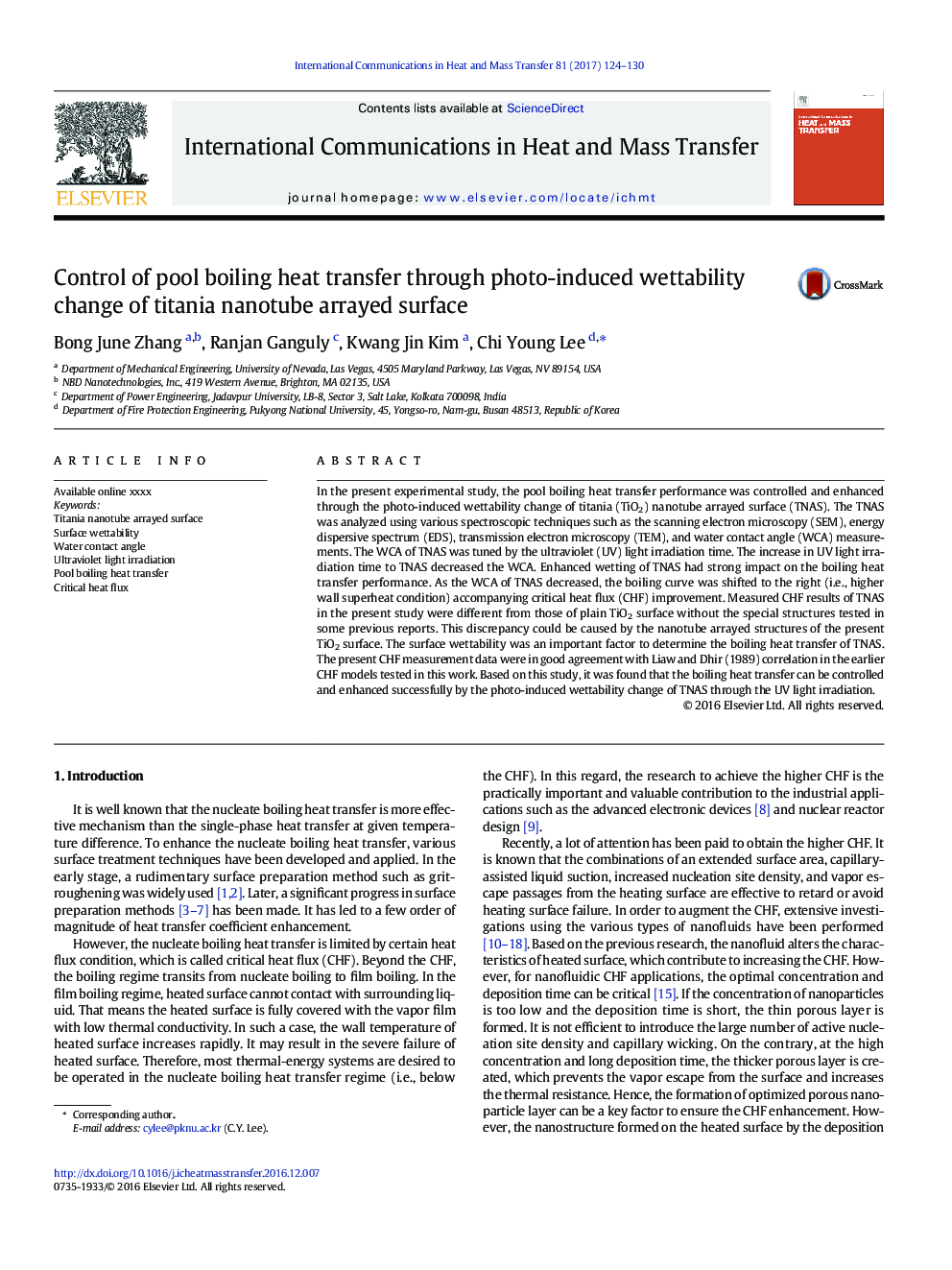| Article ID | Journal | Published Year | Pages | File Type |
|---|---|---|---|---|
| 4992986 | International Communications in Heat and Mass Transfer | 2017 | 7 Pages |
Abstract
In the present experimental study, the pool boiling heat transfer performance was controlled and enhanced through the photo-induced wettability change of titania (TiO2) nanotube arrayed surface (TNAS). The TNAS was analyzed using various spectroscopic techniques such as the scanning electron microscopy (SEM), energy dispersive spectrum (EDS), transmission electron microscopy (TEM), and water contact angle (WCA) measurements. The WCA of TNAS was tuned by the ultraviolet (UV) light irradiation time. The increase in UV light irradiation time to TNAS decreased the WCA. Enhanced wetting of TNAS had strong impact on the boiling heat transfer performance. As the WCA of TNAS decreased, the boiling curve was shifted to the right (i.e., higher wall superheat condition) accompanying critical heat flux (CHF) improvement. Measured CHF results of TNAS in the present study were different from those of plain TiO2 surface without the special structures tested in some previous reports. This discrepancy could be caused by the nanotube arrayed structures of the present TiO2 surface. The surface wettability was an important factor to determine the boiling heat transfer of TNAS. The present CHF measurement data were in good agreement with Liaw and Dhir (1989) correlation in the earlier CHF models tested in this work. Based on this study, it was found that the boiling heat transfer can be controlled and enhanced successfully by the photo-induced wettability change of TNAS through the UV light irradiation.
Keywords
Related Topics
Physical Sciences and Engineering
Chemical Engineering
Fluid Flow and Transfer Processes
Authors
Bong June Zhang, Ranjan Ganguly, Kwang Jin Kim, Chi Young Lee,
